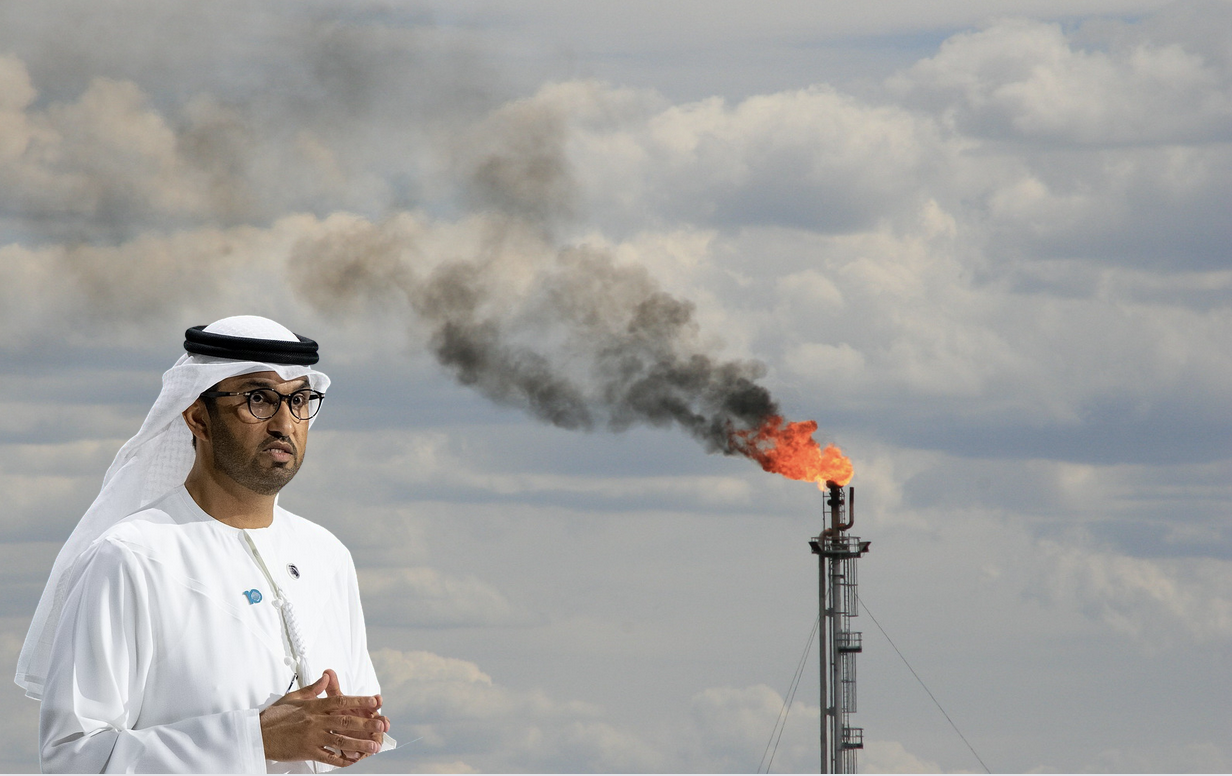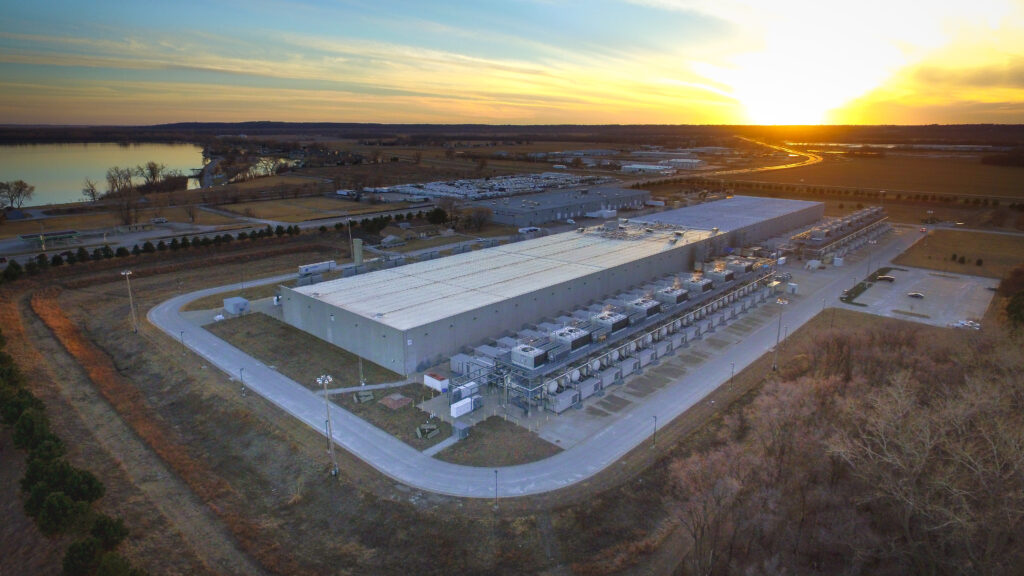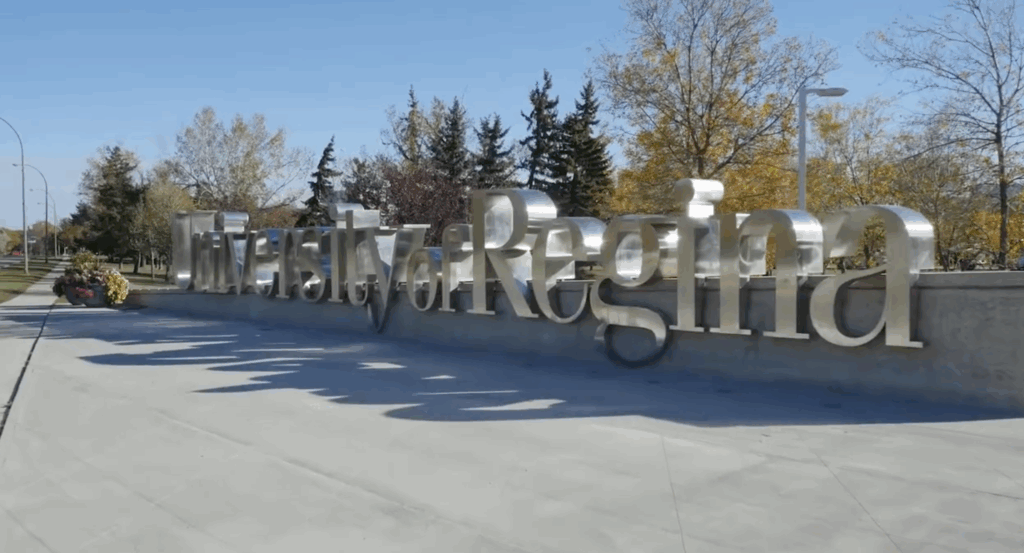State-owned oil and gas fields across the United Arab Emirates have flared almost constantly despite a long-standing policy to eliminate “routine” flaring in their operations, DeSmog can reveal.
New data, produced exclusively for The Guardian and DeSmog, found that a single gas field in the United Arab Emirates run by state oil firm Adnoc flared more gas than all oil and gas fields in Norway last year.
The Adnoc LNG field and a number of others in the UAE appear to be constantly emitting and burning polluting methane despite Adnoc’s 20-year-old policy to reduce the environmentally damaging practice to zero in on day to day operations.
The revelations come as world leaders prepare to head to Dubai for the UN’s annual climate summit, known as COP, to agree on ways to cut further catastrophic temperature rise.
The conference, which starts 30 November, is set to provide a litmus test for the oil and gas industry’s position on flaring, which mostly burns off excess gas released when drilling for oil, but can also take place at LNG plants, where gas is liquified for export.
Global emissions from flaring account for over 350 million tonnes of greenhouse gas emissions annually, the equivalent of more than 90 coal plants.
Adnoc claims it has cut the volume of natural gas flared by more than 90 percent since the early 2000s when the company started its ‘zero routine flaring’ policy – referring to flaring that happens every day as part of normal oil operations.
In October, Al Jaber announced that 20 major oil and gas producers from around the world have pledged to eliminate gas flaring and methane emissions by the end of the decade.
But according to the new data by the Centre for Research on Energy and Clean Air (Crea), a number of fields in the UAE are flaring virtually every day. Flaring also allows the escape of some unburned methane gas, which is a powerful greenhouse gas.
The analysis assessed flaring in 32 oil and gas fields in the UAE, 20 of which are run by Adnoc. It shows four fields flared on at least 97 percent of the days, with an average of just 14 days unavailable due to cloud cover.
The revelations have alarmed experts ahead of the critical COP28 climate summit, whose hosts have already been hit by accusations of greenwashing. Adnoc is the UAE’s top oil and gas producer and one of the world’s biggest producers of crude oil.
“As the host of the upcoming Cop28,” said Hubert Thieriot, a data scientist at Crea who produced the flaring data, “it is critical that UAE further strengthens and respects its commitments if it wants to play a leader’s role in reducing flaring.”
A spokesperson for Adnoc told the Guardian, in response to these findings: “The data on ADNOC presented in your article is misleading as satellite images may not distinguish between flaring or having a pilot flame ignited as part of normal operations.” Adnoc did not respond to a request for data on the company’s use of pilot flames.
Paul Balcombe, senior lecturer in chemical engineering at Queen Mary University, was sceptical about Adnoc’s claim that the data showed pilot flares, rather than routine flaring. He pointed out that pilot flares rarely emit the quantities of gas seen in Crea’s data.
“If they are pilot flares, they are massive pilot flares and there should be efforts made to reduce them,” said Balcombe.
“We do need flaring sometimes for safety reasons,” he said of the practice, which happens when no equipment has been installed to capture the escaping methane or when gas has to be unexpectedly released to avoid industrial accidents. “But the definitions on what constitutes routine flaring are open to interpretation,” added Balcombe. “Reducing flaring is a low hanging fruit in terms of emissions reductions.”
Costing a Fortune
Companies and major oil producing states have committed to end routine flaring by 2030, under a World Bank scheme, though the UAE is not signed up to this agreement.
Adnoc LNG field on Das Island, an island off the coast of Abu Dhabi that is almost entirely repurposed as a giant gas refinery, flared 157 million cubic metres (mcm) of gas in 2022, according to the analysis.
In contrast, data collected by the World Bank shows all Norway’s oil and gas fields flared 135 mcm of gas the same year.
Another Adnoc field, Umm-Dalkh, has flared in more than 90 percent of recorded days between 2018 and 2022, according to Crea’s data.
Separate analysis from last month found that flaring is costing the UAE a fortune. The country flared, vented, and leaked gas worth $800 million in 2022, according to research by Capterio, a company that tracks flaring worldwide, published by Atlantic Council, a U.S. think tank.
This appears to be a country-wide problem, the Crea data suggests, with other non-Adnoc UAE fields also appearing to flare constantly.
Fateh and Fateh South West fields, both operated by Dubai Petroleum, which is 100 percent owned by the government of Dubai, recorded flaring on between 90 and 100 percent of days between 2018 and 2022, and in more than two-thirds of recorded days so far in 2023.
Dubai Petroleum says it is committed to “minimise flaring”. The company did not respond to a request for comment on this story from The Guardian.
Crea’s satellite analysis shows that in 2023, flaring in the UAE is occurring less frequently overall than in 2022, with annual flaring volumes for the whole country suspected to be slightly down.
The exception to that is the Adnoc LNG field. Although the number of days where flaring was spotted is down on 2022, the volume flared is on track to be greater. This is most likely because more gas is being flared on days when flaring occurs.
Mark Davis, flaring expert and CEO and founder of Capterio, explained that the definition of ‘routine flaring’ from the World Bank has “considerable wiggle room”, meaning that many fields that flare routinely are classified as zero ‘routine flaring’.
“The data is currently self-reported with no independent validation, and thirdly there is no real enforcement mechanism to incentivise producers to apply,” he said.
Note on methodology
The Crea data was produced using publicly available data collected by the Visual and Infrared Radiometer Suite of instruments mounted on the Suomi NPP satellite. The instruments detect points of intense heat from flares.
This data was converted into flare gas volumes using a published methodology, which is also used in the World Bank analyses. The results were cross-checked against annual flare volume data produced by the World Bank and were in close agreement.
Subscribe to our newsletter
Stay up to date with DeSmog news and alerts






